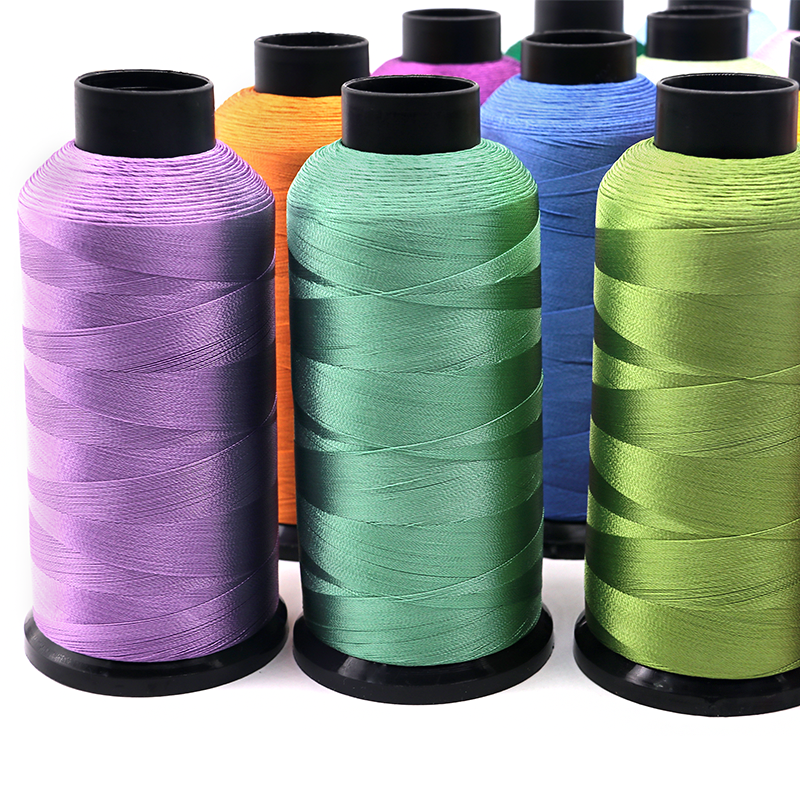Understanding the Delicate Nature of Rayon Thread in Sewing Projects
Rayon thread has become increasingly popular among sewists for its lustrous appearance and smooth finish. However, many crafters face the frustrating challenge of rayon thread breaking during their sewing projects. This delicate thread requires special handling and specific techniques to achieve the best results. In this comprehensive guide, we'll explore proven methods to prevent thread breakage and ensure your sewing projects progress smoothly.
Essential Preparation Steps for Working with Rayon Thread
Proper Thread Storage and Handling
The way you store and handle rayon thread significantly impacts its performance. Keep your thread in a cool, dry place away from direct sunlight to maintain its integrity. Before starting your project, allow the thread to acclimate to room temperature if it's been stored in a cold area. Handle the thread gently, as rough treatment can weaken the fibers before you even begin sewing.
Consider using thread nets or thread stands to help control the flow of thread from the spool. These accessories prevent the thread from tangling and creating unnecessary tension that could lead to breakage. When threading your machine, hold the thread with gentle tension rather than pulling it tightly.
Machine Setup and Maintenance
A well-maintained sewing machine is crucial for preventing rayon thread breaking. Clean your machine thoroughly, removing any lint or debris from the bobbin area and tension discs. Check that all parts are properly oiled and moving smoothly. A rough spot in the thread path can cause significant damage to delicate rayon thread.
Pay special attention to your needle condition. A dull or damaged needle can snag the thread, leading to immediate breakage. Use a fresh needle appropriate for your fabric weight, typically size 70/10 or 80/12 for medium-weight fabrics. The needle's eye should be well-polished and free from burrs.
Optimal Machine Settings for Rayon Thread Success
Tension Adjustments
Getting the tension right is perhaps the most critical factor in preventing rayon thread breaking. Start with a slightly lower tension than you would use for standard polyester thread. Most machines work well with tension settings between 3 and 4 for rayon thread. Test your settings on a scrap piece of your project fabric before beginning the actual work.
Remember that both upper and bobbin tension need to be balanced. If you're seeing loops on either side of your fabric, adjust accordingly. Making small, incremental changes is better than dramatic adjustments that could throw off your entire balance.
Speed and Stitch Length Considerations
Slower sewing speeds are your friend when working with rayon thread. High-speed sewing can create excessive heat and friction, weakening the thread and increasing the likelihood of breakage. Set your machine to a moderate speed and maintain a consistent pace throughout your project.
Adjust your stitch length to complement the thread's characteristics. A slightly longer stitch length, around 2.5 to 3.0 mm, usually works well with rayon thread. This reduces the number of times the thread passes through the fabric and minimizes stress on the fibers.
Advanced Techniques for Specialized Projects
Decorative Stitching Strategies
When using rayon thread for decorative work, consider using a different thread in the bobbin. A strong polyester bobbin thread can provide stability while allowing the rayon to shine on the surface. This technique is particularly useful for embroidery or topstitching projects where the decorative effect is only needed on one side.
For intricate decorative patterns, use stabilizers appropriate for your fabric type. A good stabilizer supports the fabric and helps prevent puckering, which can put additional stress on the thread. Water-soluble stabilizers are excellent for delicate fabrics, while tear-away types work well for medium to heavy-weight materials.
Professional Finishing Methods
Take extra care when securing your stitches at the beginning and end of seams. Back-stitch carefully and slowly to avoid thread buildup that could lead to breakage. Consider reducing your stitch length slightly for these securing stitches to create a stronger hold.
When pressing your finished work, use appropriate heat settings and avoid direct iron contact with rayon thread stitching. Steam can be helpful, but always test on a sample first to ensure the thread maintains its integrity and shine.

Troubleshooting Common Issues
Identifying Problem Sources
When rayon thread breaking occurs, systematically check each potential cause. Start with the thread path, ensuring there are no rough spots or debris causing friction. Examine your needle for damage or wear, and verify that you're using the correct size and type for your project.
Look for patterns in when breakage occurs. Does it happen more frequently at certain speeds or when sewing through multiple layers? Understanding these patterns can help you adjust your technique appropriately and prevent future issues.
Quick Solutions and Adjustments
Keep a troubleshooting kit nearby with spare needles, different sizes of thread nets, and various types of stabilizers. Sometimes a quick change of needle or adding a thread net can resolve breaking issues immediately. Don't hesitate to try different combinations of settings and accessories until you find what works best for your specific project.
Document successful solutions for future reference. Each fabric and project may require slightly different approaches, and having a record of what works can save time and frustration on future projects.
Frequently Asked Questions
Why does my rayon thread keep shredding?
Rayon thread typically shreds when there's too much friction in the thread path or when using an inappropriate needle. Ensure your machine is properly threaded, clean, and fitted with a new needle designed for delicate threads. Using a thread net and reducing machine speed can also help prevent shredding.
Can I use rayon thread in my bobbin?
While it's possible to use rayon thread in the bobbin, it's often better to use a stronger polyester thread instead. This provides better stability while still allowing the decorative rayon thread to show on the top side of your work.
How should I store my rayon thread to maintain its quality?
Store rayon thread in a cool, dry place away from direct sunlight and extreme temperatures. Using thread nets or covers can protect the thread from dust and tangles. Avoid storing thread in areas with high humidity, as moisture can weaken the fibers.
What's the best needle size for sewing with rayon thread?
For most applications, a size 70/10 or 80/12 needle works well with rayon thread. Choose a needle with a larger eye to reduce friction, and always ensure it's sharp and free from damage. For very fine fabrics, you might go down to a 60/8 needle, while heavier fabrics may require a 90/14.

